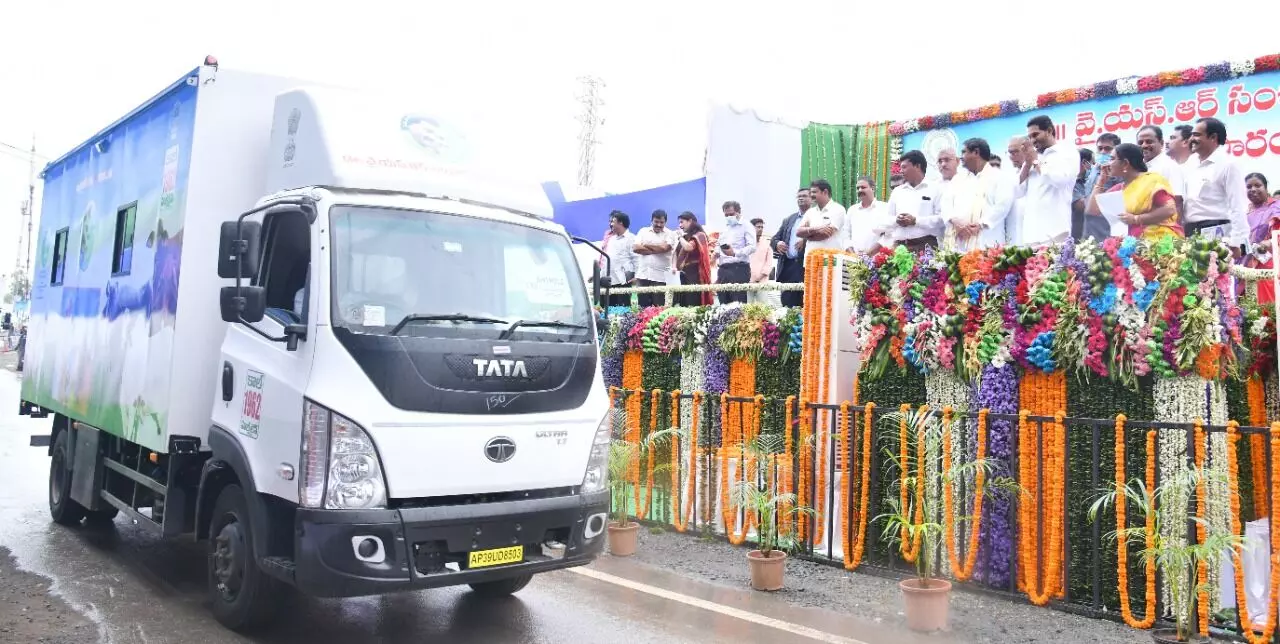Tadepalli: The Andhra Pradesh government has set up mobile ambulance veterinary clinics (MAVCs), similar to 108 ambulance services, to make veterinary services available at people's doorsteps. On Thursday, Chief Minister Jagan Mohan Reddy flagged off a fleet of 175 mobile veterinary ambulances at the HCM camp office.
A total of Rs. 143 crores were spent for the 175 ambulances under phase I. Another 165 veterinary ambulances, costing Rs. 135 crores, will be added in the second phase. This means a total of 340 ambulances with two veterinary ambulances for each Assembly constituency.
The ambulances will attend to all emergency services, including artificial insemination and early veterinary diagnosis. Another major facility these ambulances will provide is the hydraulic lift facility to lift animals and shift them to the nearest government veterinary facility in case of an emergency.
One veterinary doctor and one para-veterinary worker will be assigned to each ambulance. In case of an emergency, people can reach out to a toll-free number – 1962 – for immediate medical assistance.
Other medical facilities
· The ambulances will be equipped with a small laboratory that can perform 20 types of manure tests and 15 types of blood tests. It will be equipped with all types of vaccines and medicines and a hydraulic facility to load cattle into the vehicle.
· In addition to primary medical services, veterinary ambulances are also designed to perform minor surgeries on bovine animals, sheep, goats, and pets.
· In case of an emergency, the animal can be taken to the nearest veterinary area hospital/veterinary polyclinic for proper treatment to save the animal.
· After treatment, the animal will be transported to the livestock farmer's house for free.
